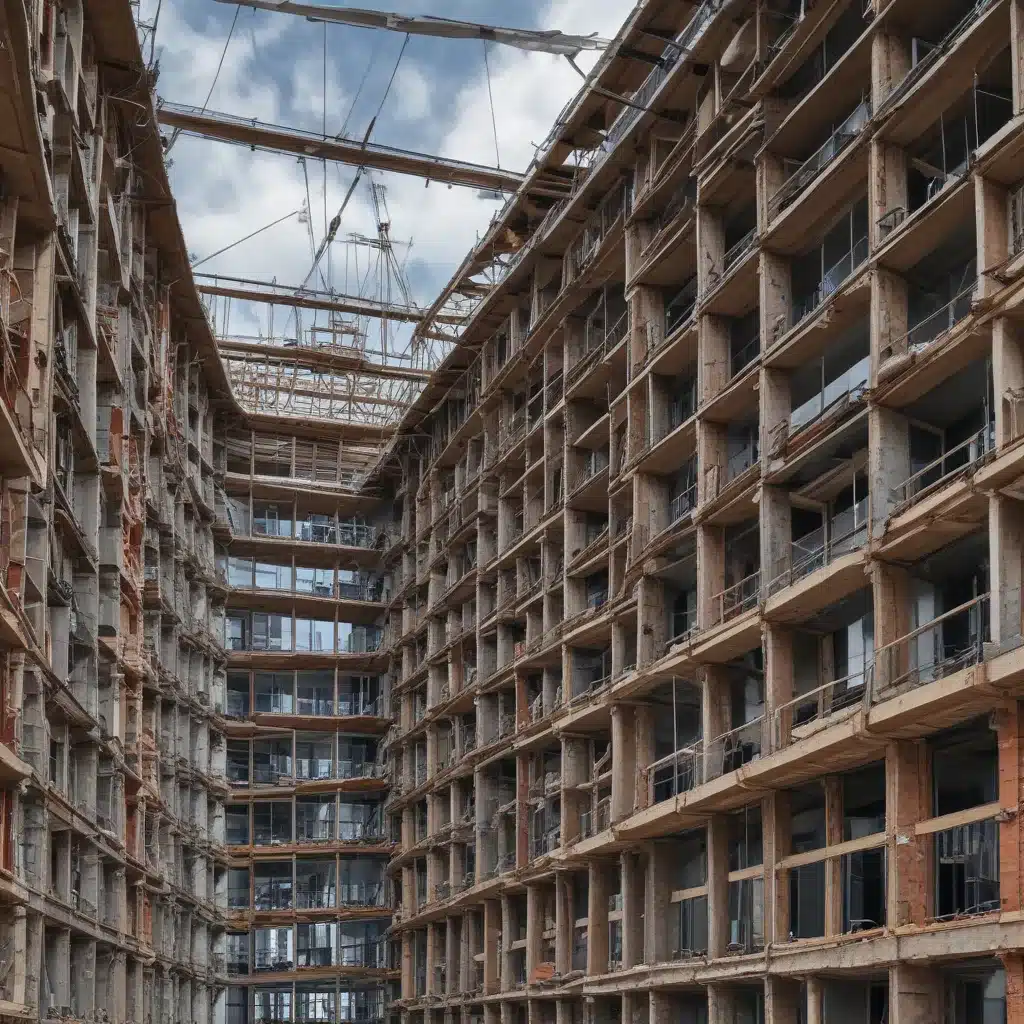
The Origins of BIM: A Journey through Time
Ah, the winding path of technological progress – it’s like navigating a construction site, full of unexpected twists and turns. Let me take you back to the humble beginnings of Building Information Modeling (BIM), a revolutionary approach that has transformed the way we design, build, and manage our built environment.
The origins of BIM can be traced back to the 1970s, when visionary pioneers in the field of computer-aided design (CAD) began to envision a more integrated and data-driven approach to construction. These early trailblazers, like Charles Eastman and his colleagues at Georgia Tech, recognized the limitations of traditional 2D drawing-based methods and dreamed of a more holistic, three-dimensional approach.
At the time, the concept of a “building model” was still a nascent idea, but these forward-thinking individuals understood the immense potential it held. They imagined a future where architects, engineers, and construction professionals could collaborate seamlessly, sharing a common digital representation of a building that contained not just its physical geometry, but a wealth of critical information about its components, materials, and performance.
The Emergence of BIM: Revolutionizing the Industry
As the decades passed, the BIM concept slowly gained traction, with early adopters exploring its capabilities and refining the underlying technologies. In the 1980s and 1990s, software developers like Autodesk and Bentley Systems began to introduce the first commercial BIM tools, empowering design professionals to create and manage virtual building models.
The turning point came in the early 2000s, when the AEC (Architecture, Engineering, and Construction) industry began to widely embrace BIM. Governments and industry organizations around the world recognized the transformative power of this approach, and started to mandate or encourage its adoption on major public and private projects.
I remember the excitement and trepidation that swept through the construction world as BIM gained momentum. Suddenly, the idea of a single, integrated digital model that could guide the entire building lifecycle – from design to construction to operations – seemed within reach. No longer were we limited to static 2D drawings; instead, we had a dynamic, information-rich platform that could facilitate collaboration, improve decision-making, and enhance project outcomes.
The Maturing of BIM: Unlocking New Possibilities
As BIM technology continued to evolve and become more sophisticated, its impact on the industry became increasingly profound. Architects and engineers could now leverage 3D visualization, clash detection, and simulation capabilities to identify and resolve design issues before breaking ground. Construction professionals could use BIM-enabled tools to optimize project scheduling, streamline material procurement, and monitor construction progress in real-time.
But the true power of BIM lies in its ability to extend beyond the design and construction phases. Building owners and facility managers are now harnessing the wealth of information stored in the BIM model to improve the long-term performance and maintenance of their assets. By integrating BIM with emerging technologies like Internet of Things (IoT) sensors and Building Management Systems (BMS), they can optimize energy usage, predict equipment failures, and plan for future renovations and upgrades.
I’ve had the privilege of witnessing firsthand the transformative impact of BIM on numerous projects, from large-scale infrastructure developments to high-rise residential complexes. The level of coordination, efficiency, and overall project success that can be achieved through this collaborative approach is truly remarkable.
The Future of BIM: Embracing Emerging Technologies
As we look towards the horizon, the future of BIM is both exciting and full of promise. The integration of emerging technologies, such as artificial intelligence, virtual and augmented reality, and generative design, is poised to take BIM to new heights.
Imagine a world where AI-powered algorithms can analyze BIM data to automatically generate optimized design alternatives, taking into account factors like energy efficiency, structural integrity, and construction feasibility. Or envision a scenario where construction workers can don AR/VR headsets and “see” the virtual building model overlaid on the physical site, allowing them to navigate the project, identify issues, and collaborate in real-time.
The possibilities are truly endless, and I can’t help but feel a sense of wonder and anticipation as I contemplate the future of our industry. BIM has already revolutionized the way we approach the built environment, and I have no doubt that it will continue to push the boundaries of what’s possible.
Embracing the BIM Revolution: A Call to Action
As we stand at the crossroads of this BIM-driven transformation, it’s clear that the construction industry has a pivotal role to play. We must embrace this technological shift, not just as a means to stay competitive, but as an opportunity to elevate our craft and deliver projects that are safer, more sustainable, and better aligned with the evolving needs of our communities.
I encourage all of my fellow construction professionals – from architects and engineers to project managers and tradespeople – to dive headfirst into the world of BIM. Invest in the necessary training and technology, collaborate with like-minded individuals and organizations, and continuously explore the new frontiers of this ever-evolving field.
Remember, the journey of a thousand miles begins with a single step. By taking that first step towards BIM adoption and mastery, we can collectively shape a future where the built environment is not just a collection of static structures, but a dynamic, interconnected ecosystem that serves the needs of people and the planet.
So, let’s roll up our sleeves, don our hard hats, and embark on this exciting BIM odyssey together. The future of construction is waiting, and it’s up to us to define it.
For more information on our construction trade services, please visit ConstructionTradeX.